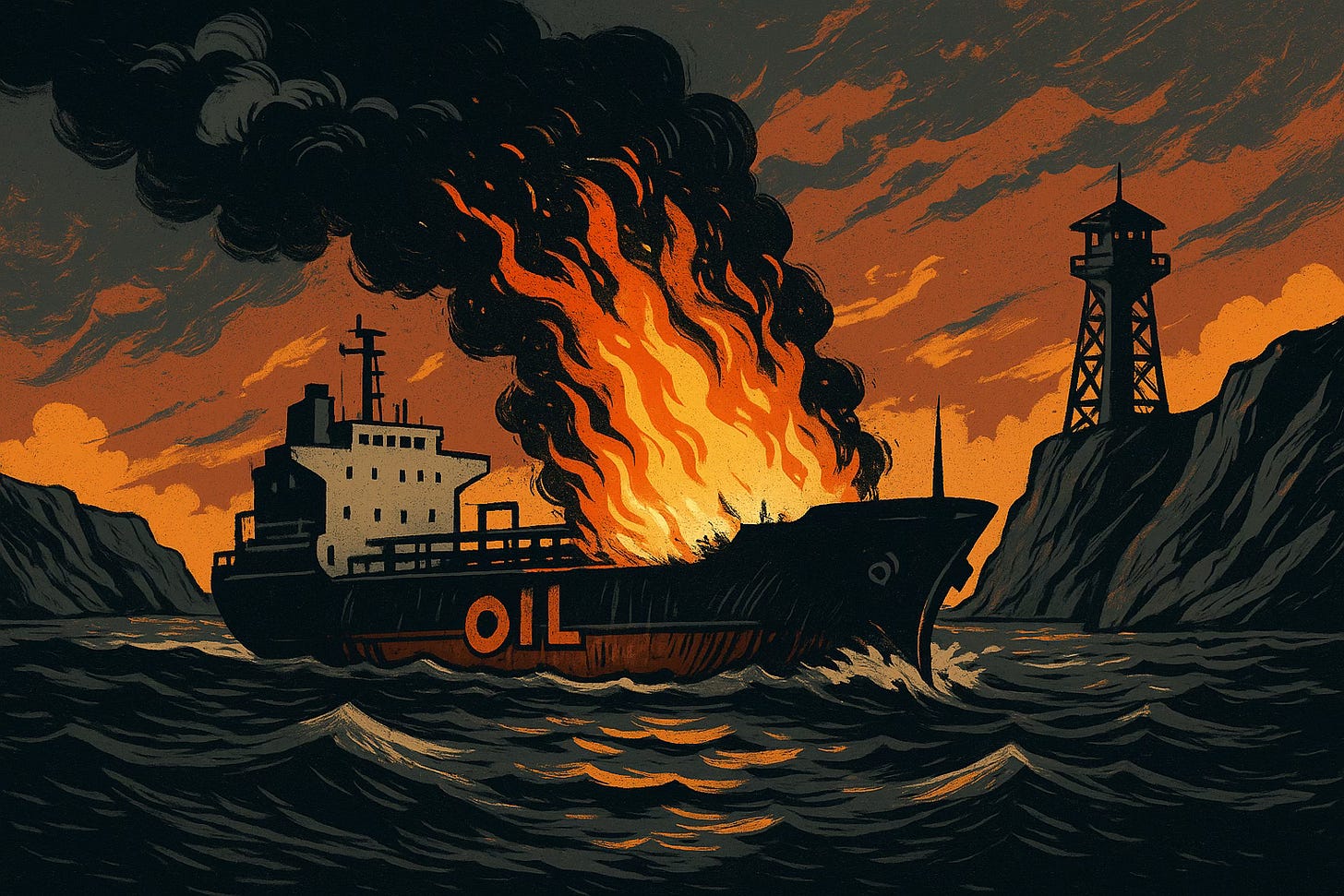Oil Spikes. Inflation Bites. Policy Freezes.
You can’t print barrels. You can only kill demand.
America just got slapped awake. Overnight strikes on Iranian nuclear facilities punched oil futures toward eighty bucks, and this time we cannot pretend geography is someone else’s problem.
Do the back-of-envelope math. Five dollars a barrel vanished in the opening minutes. Veteran traders like Andy Lipow are already whispering eighty. If Tehran squeezes the Strait of Hormuz—the narrow lane that carries a fifth of global crude—our worst case hits triple digits. Pump prices tack on another seventy-five cents, eliminating the single bright spot consumers still point to when asked about inflation.
Oil shocks used to arrive in relatively clean economic weather. Not this round. The post-war Hamilton framework linked every recession to an energy spike that struck a mostly healthy patient. Today’s patient is already bleeding from self-inflicted wounds.
Tariffs, immigration bottlenecks, regulatory whiplash—each one a supply-side tax. Layer an oil surge on top and you do not get arithmetic; you get multiplication. Import costs climb, freight costs climb, and the whole price structure ratchets higher. A real-time case study in how to manufacture stagflation.
The Fed knows this script and hates it. When oil jumps because a tanker route is under threat, interest-rate hikes only bludgeon demand; they never conjure new barrels. Monetary chemo, brutal by design, leaves scars long after the tumor is gone.
Energy economists have measured the asymmetry. A ten-percent pop in crude can shave roughly five percent off cumulative GDP, yet an equal-sized decline returns only a sliver of that loss. Scar tissue remains. Even America’s shale bounty cannot flip the ledger: the sector booms, the macro picture sags. Ask the U.K. how that feels. North Sea windfalls once pushed sterling higher, hammering exporters and canceling the “oil winner” narrative.
Timing could not be worse for households. Drivers only just recalibrated to sub-three-dollar gas. Now they will watch the digital signs spin upward before the coffee they bought cools. Nothing embeds inflation expectations like a price you revisit every week.
On the opposite side of the table sits Iran, cards fanned out. Foreign Minister Abbas Araghchi hints at “a variety of options.” Shutting Hormuz tops the stack. Beijing imports one-third of its crude through that chokepoint, Washington about three percent. Secretary of State Marco Rubio appeals to China for leverage—call it a polite request with limited bite.
Futures screen red? Or green? Hard to tell when price is half reality, half fear. The risk premium flexes with every headline. That volatility freezes budgets, delays capex, feeds back into growth estimates. Good luck planning payroll with Brent charting like a seismograph.
Make no mistake, this is more than an oil story. It is a stress test for an economy already nursing policy bruises. Textbook models rarely simulate simultaneous shocks; we are about to supply the missing chapter.
Ninety days will tell the tale. If Tehran blinks, crude may drift back and the scare lives on as a footnote. If missiles fly near Hormuz, expect a hurricane of headlines, a spike that dwarfs the last inflation cycle, and a Fed forced to choose between recession and runaway prices.
Markets are voting in real time, and they do not like the ballot.


